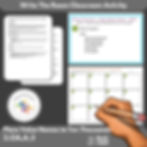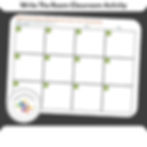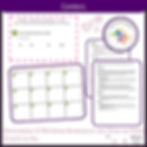Introduction to Special Education Lesson Plans

Special education lesson plans are not merely standard lesson plans adjusted; they are meticulously crafted to meet each special education student's unique needs and learning styles. These plans serve as essential resources for special education teachers, guiding them to engage students effectively throughout the school year. Think of these plans as a custom road map for every student. The goal? To guide them through their education journey in a way that makes sense to them and helps them thrive. Crafting these plans takes understanding, patience, and creativity. It means setting clear goals, making lessons accessible, and continuously adapting to the student's progress. Whether you're a seasoned Special Education Teacher or new to the field, the key is to focus on the student's abilities, not just their challenges, aligning with the principles of individualized education plans. Remember, success in special education is measured one step at a time, and these plans are the blueprint for that journey.
Understanding the Needs of Special Education Students

To craft successful special education lesson plans, special education teachers start by leveraging their understanding of students' prior knowledge and learning disabilities. This assessment helps in tailoring instructions that cater to individualized education programs (IEPs), ensuring each student's needs are met. Special education students often face unique challenges that require patience, creativity, and flexibility from their teachers. Some might need more time to grasp concepts, while others require lessons tailored to their specific learning disabilities. Key factors to consider include identifying individual strengths and weaknesses, understanding sensory sensitivities, and acknowledging preferred learning styles, whether visual, auditory, or kinesthetic. Remember, the aim is not to fit them into a one-size-fits-all model but to adapt your teaching methods to support their unique learning journey. Getting to know your students on this level not only boosts their confidence but also enhances their educational experience. By keeping their needs at the forefront, you'll be better equipped to create impactful and inclusive lesson plans that cater to every student's growth.
Essential Components of a Special Education Lesson Plan

When you're creating a lesson plan for special education, certain parts are non-negotiable for the plan to be effective. First, clear and concise objectives are key. These objectives guide the lesson, providing TeachTastic checkpoints to measure student understanding and progress. Next, include tailored instructional strategies that accommodate the diverse needs of your students. Think hands-on activities or visual aids that cater to various learning styles. Assessment methods are also crucial. You need a plan to test if the lesson’s goal was accomplished. These can range from verbal feedback to customized quizzes. Lastly, flexibility is paramount. Be ready to adjust your strategies based on real-time student feedback and learning progress. Remember, the goal of special education is not just to teach but to ensure learning is accessible to all.
Strategies for Engaging Students with Diverse Needs
To effectively engage students with diverse needs, special education teachers must first understand each student's unique needs and learning styles. By incorporating a variety of teaching methods, including direct instruction and classroom activities designed to improve fine motor skills and life skills, teachers can ensure that students not only learn but understand and apply the knowledge. This can seem like a big task, but it's the foundation of a successful special education lesson plan. Use visual aids, like pictures and videos, to cater to visual learners. For those who learn by doing, incorporate hands-on activities that allow them to physically engage with the material. Mix in storytelling to hook auditory learners and use group activities to promote social interaction and learning through peers. Always include clear, simple instructions and check in often to ensure understanding. Remember, flexibility is key. Be ready to adapt your strategies on the fly to meet your students where they are. Patience and creativity will go a long way in creating a learning environment where every student can thrive.
Incorporating Technology into Special Education Lesson Plans
Incorporating technology into special education lesson plans transforms the learning process, making it more accessible and engaging for students. Special education resources, including free lesson plans and apps, play a pivotal role in teaching math, reading, and other subjects by providing interactive experiences that cater to various learning styles. Think interactive apps, videos, and online resources; all these can make learning more engaging for students with different needs. You don't have to break the bank either. Start with what your school already has or explore free online tools. When you plan lessons, mix in tech that supports your goals. Maybe it's a storytelling app for a reading lesson or an online math game for number skills. Remember, the point is to boost learning, not just to use tech because it's there. Keep lessons clear and focused, and always have a backup plan in case the tech fails. Students should always feel they're making progress, with or without tech. Let's make learning accessible and fun for every student.
Adapting Materials for Various Learning Styles and Abilities
When you're crafting lesson plans for special education, it's crucial to adapt materials to fit various learning styles and abilities. Remember, every student learns differently. By adapting materials to fit various learning styles and abilities, Special Education Teachers ensure that lessons cater to visual, auditory, and kinesthetic learners, making education accessible to every special education student. Adaptation doesn't have to be complex. Start by breaking down lessons into smaller, more manageable parts. This way, students don't get overwhelmed. If you're teaching a math concept, use physical objects they can touch and move around to solve problems. For reading, mix in audiobooks with printed materials, catering to both visual learners and those who comprehend better through listening. Include activities that allow students to move around, especially for those who learn best by doing. Technology is your ally here. Various apps and software are designed to make learning interactive, engaging, and accessible to students with different needs. Remember, the goal is to ensure each student can access the curriculum in a way that makes sense to them. It's about giving every student a fair shot at success, irrespective of their learning style or ability.
Effective Assessment Methods in Special Education
Effective assessment in special education is like navigating a map; it guides both teacher and student toward success. The goal? To understand a student's current level, set appropriate goals, and track progress. Let's keep it simple - assess often, use varied methods, and make it meaningful. Start with observations. Watch how a student interacts with materials and others. Are they struggling with certain tasks? Jot it down. Next, dive into curriculum-based assessments. These are tailored to what's being taught. They show if a student is keeping up with the class or needs extra support. Don't forget about portfolios. Collecting a student's work over time gives you a fuller picture of their abilities and growth. This isn't just about grading but understanding. Lastly, use adaptive assessments, which adjust in difficulty based on the student's answers. It's like a personalized quiz, helping you pinpoint exactly where help is needed. Keep the student in the loop. Their input can shed light on hidden challenges. Together, chart a course that plays to their strengths, making learning an engaging adventure.
Creating an Inclusive Classroom Environment
Creating an inclusive classroom environment is not just about mixing students of all abilities together. It's about planning and action. You want each student to feel welcome, understood, and supported. First, get to know each student’s needs and strengths. Use this knowledge to tailor your approach. Always use simple, clear language and visuals to support understanding. Group work? Mix abilities, so everyone learns from each other. Remember, your classroom layout matters. Ensure it’s accessible for all, including those with physical disabilities. Importantly, celebrate diversity. Highlight the value of different perspectives and abilities. This way, every student feels integral to the class's success. Your attitude sets the tone - show empathy, patience, and respect. This encourages students to adopt these attitudes too.
Tips for Collaborating with Parents and Other Educators
For Special Education Teachers, collaborating with parents and other educators is essential, ensuring a unified approach to each student's individualized education plan. Remember, you're not alone. First, always keep communication lines open. This means sending regular updates and being receptive to feedback. Parents know their children best, so their insights can be invaluable. Next, involve parents in the planning process. Ask them about their child's interests, strengths, and areas that need improvement. Use this information to tailor your lesson plans. Also, tap into the expertise of other educators. Maybe a colleague has dealt with a similar challenge before and can offer advice or resources. Don't hesitate to ask for help or share your own experiences. Team meetings can be a great opportunity for this. By working together, you pave the way for more effective and impactful learning experiences for your students. Remember, collaboration is key.

Reflecting on the Impact of Well-Designed Special Education Lesson Plans
Well-designed special education lesson plans, meticulously crafted with the unique needs of special education students in mind, embody the essence of a well-written lesson plan. These resources enable special education teachers to not only assess student learning but to monitor student progress effectively, ensuring a TeachTastic educational experience that spans the entire school year. They're not just a bunch of words on a page. They're a road map for success. When you put thought and care into these plans, you tailor learning to meet each student's unique needs. It's about more than just academics. It's about building confidence, skills for life, and a sense of belonging. Remember, a lesson plan is more than a daily task; it's a step towards a brighter future for your students. Each plan you create is a chance to make learning accessible and enjoyable. So, pat yourself on the back. By committing to thoughtful, well-crafted lesson plans, you're shaping a world where every student has the opportunity to thrive. Keep pushing boundaries, adapting, and learning. Your efforts have a lasting impact, not just on your students but on the future of education.
































